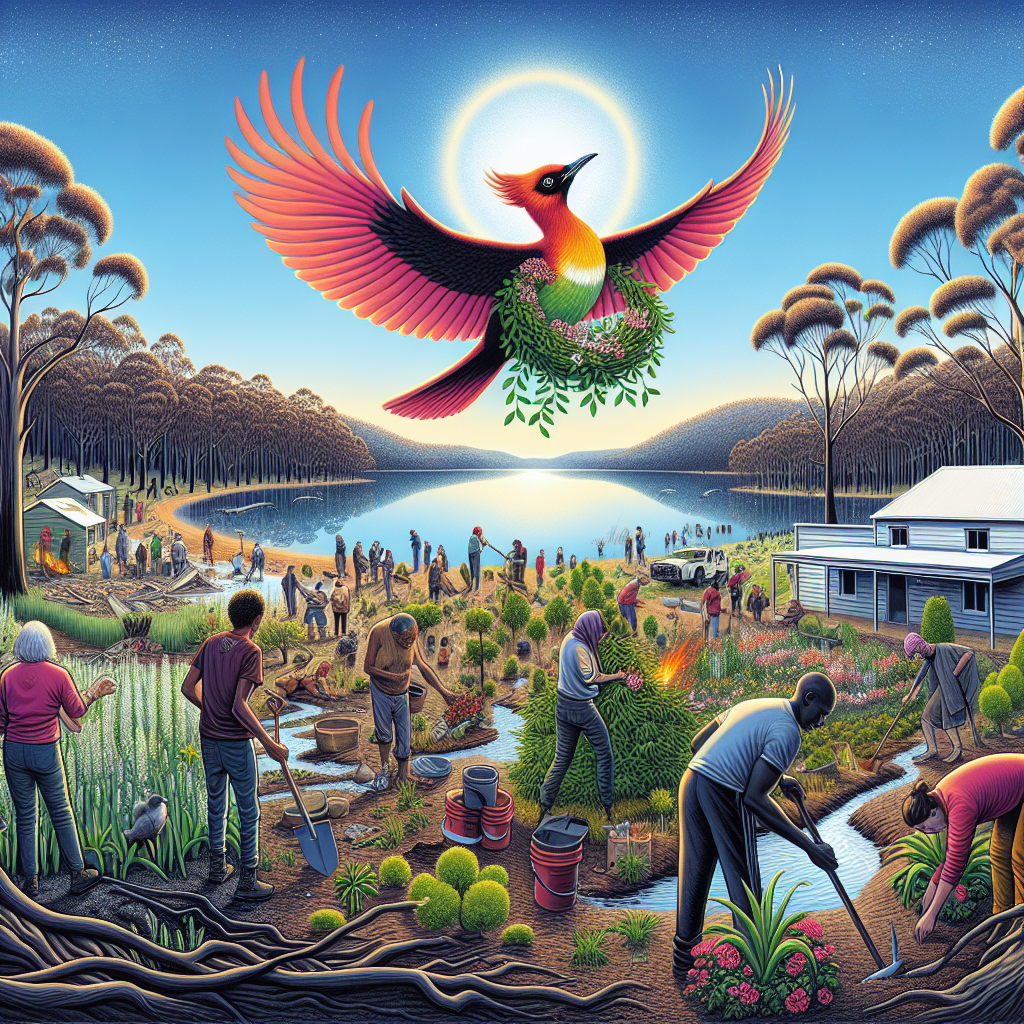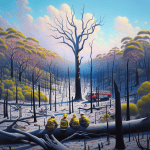The aftermath of the devastating bushfires in The Lakes and Wooroloo regions of Western Australia has been deeply felt by the affected communities. However, the recovery efforts and resilience displayed illustrate the power of collective dedication to rebuild, recover, and prepare for the future. This article sheds light on the steps taken, the support systems available, and the broader lessons learned from the Wooroloo bushfire recovery journey.
The Lakes-Wooroloo Bushfire: A Catastrophic Event
The Wooroloo bushfire, which erupted in early 2021, rapidly spread across thousands of hectares of land, destroying homes, farmlands, and forests. The fire was categorized as one of the most severe bushfires in Western Australia in recent years. High temperatures, strong winds, and dry conditions fueled its rapid growth, leaving many communities with little time to escape.
Impact on the Community
The bushfire affected more than 80 homes, displacing families and causing significant financial and emotional distress. Farms and small businesses suffered devastating losses, with livelihoods being destroyed almost overnight. Additionally:
- Critical infrastructure such as roads, powerlines, and telecommunications networks were damaged.
- Wildlife habitats and the natural ecosystem were severely impacted, creating long-term challenges for biodiversity.
- Local cultural and heritage sites were affected, underscoring the need for sensitive restoration efforts.
The emotional scars remained heavy, but as the smoke cleared, the focus shifted to recovery and fostering resilience—a hallmark of the communities in The Lakes and Wooroloo.
Government-Led Recovery Efforts
Recognizing the scale of the disaster, the Western Australian government stepped in with emergency support and long-term recovery initiatives. A multi-faceted approach was developed with the central aim of helping communities regain their strength.
Key Strategies for Recovery
The government’s recovery measures were designed to meet the immediate needs of residents while supporting sustainable rebuilding. Among these were:
- Emergency Relief Packages: Immediate financial support was provided to displaced families and individuals to address essential needs like food, clothing, and accommodation.
- Recovery Coordination: A centralized recovery center was established to coordinate resources, provide updates, and offer counseling services.
- Infrastructure Restoration: Work began quickly to restore power, reconnect water supplies, and rebuild roads in affected areas.
Additionally, the WA government’s Bushfire Recovery Plan sought to involve local communities in the decision-making process, ensuring the recovery efforts reflected the priorities of those directly impacted.
Building Community Resilience
While reconstruction is a critical focus post-bushfire, the Wooroloo community recognized that building resilience to future disasters is equally important. Resilience means not only being prepared but also fostering a sense of unity and empowerment amongst community members.
Community Initiatives to Strengthen Resilience
Various grassroots and community-led approaches were implemented to strengthen local preparedness and contribute to long-term recovery, including:
- Community Workshops: Training sessions on bushfire preparedness, bushfire-resistant home design, and property maintenance were conducted to provide actionable knowledge.
- Local Volunteer Fire Brigades: Many residents joined or actively supported local fire brigades to help defend their region from future threats.
- Community Fundraising and Support Events: Events were held to raise funds for affected families and create bonds among residents.
Embracing Local Knowledge
An integral part of building resilience was leveraging the local knowledge of The Lakes and Wooroloo residents. Communities worked together to document lessons learned from the bushfire event, sharing strategies that helped mitigate damage and protect lives.
Environmental Rehabilitation
The consequences of the Wooroloo bushfire stretched beyond human lives; the environmental toll was severe. Restoring the region’s biodiversity is an essential part of the recovery process, as it supports both the ecosystem and agricultural livelihoods.
Efforts to Rehabilitate Land and Wildlife
Steps to rehabilitate the land are ongoing and include:
- Reforestation Projects: Native trees are being replanted to restore habitats for local wildlife and curb soil erosion.
- Wildlife Rescue and Monitoring: Teams have been deployed to monitor the recovery of displaced or injured animals in the bushfire’s aftermath.
- Soil Stabilization: Techniques such as mulching and planting ground cover have been implemented to avoid long-term soil infertility.
Local conservation groups, government bodies, and volunteers have collaborated to ensure these projects are carried out efficiently and effectively.
Support for Mental Health and Wellbeing
Natural disasters like the Wooroloo bushfire can have lasting psychological effects on individuals and communities. To address the emotional toll:
- Counseling and Psychological Support: Residents have had access to free mental health services, ensuring they can seek help when needed.
- Community Healing Activities: Opportunities for storytelling, art therapy, and group discussions have helped people process their trauma and foster a sense of collective healing.
The focus on mental health has been an essential component of the recovery process, ensuring that affected individuals mentally and emotionally heal alongside the rebuilding of their physical environment.
Future-Proofing Against Bushfires
Although bushfires are a natural part of Australia’s ecosystem, preparing for their frequencies and intensities in the face of climate change is crucial. The Wooroloo fire served as a wake-up call, triggering actions to mitigate the risk of future disasters.
Innovative Strategies for Bushfire Mitigation
Local governments and communities are embracing innovative solutions to reduce future risks. Key strategies include:
- Fuel Reduction Programs: Controlled burning and vegetation management around residential areas minimize potential fire fuels.
- Upgraded Fire Warning Systems: Improved warning systems aim to provide residents with more accurate and timely information.
- Education campaigns: Increased efforts are being made to educate residents about fire risks and emergency protocols.
Integrated Urban and Environmental Planning
Lessons from Wooroloo’s fires are being incorporated into long-term planning. New policies now emphasize building homes and infrastructure in a way that minimizes risk, all while maintaining a balance with environmental conservation needs.
Conclusion
The Lakes-Wooroloo bushfire was a devastating chapter for Western Australia, but the resilience shown by the affected communities is nothing short of inspiring. Through dedicated government recovery efforts, community involvement, and forward-thinking strategies, recovery has progressed steadily. Local residents are not just rebuilding their lives—they are creating stronger, safer, and better-prepared communities.
As we move forward, the stories from Wooroloo remind us of the importance of investing in both preparedness and compassion. Whether through policy changes, community resilience plans, or environmental recovery projects, every effort counts in ensuring that when disaster strikes, the community stands more united than ever.
Let this extraordinary journey of recovery be an inspiration to us all—a testament to the resilience of the human spirit and the power of collective action.


